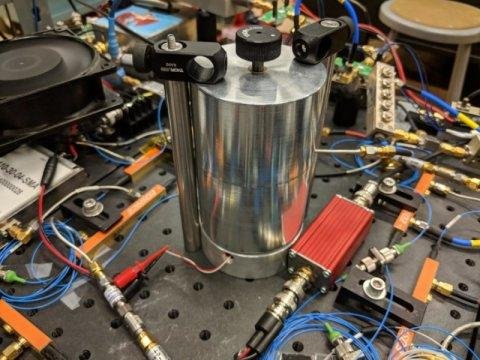Physicists at the National Institute of Standards and Technology (NIST) have used common electronics to build a laser that pulses 100 times more often than conventional ultrafast lasers. The advance could extend the benefits of ultrafast science to new applications such as imaging of biological materials in real time.
The innovation for making electrooptic lasers has been around for five decades, and the thought appears to be alluringly straightforward. Be that as it may, as of recently specialists have been not able electronically change light to make ultrafast beats and wipe out electronic clamor, or impedance.
As depicted in the Sept. 28 issue of Science, NIST researchers built up a separating technique to decrease the heatinduced obstruction that generally would demolish the consistency of electronically orchestrated light.
"We restrained the light with an aluminum can," venture pioneer Scott Papp stated, alluding to the "cavity" in which the electronic signs are balanced out and sifted. As the signs ricochet forward and backward inside something like a pop can, settled waves rise at the most grounded frequencies and shut or sift through different frequencies.
Ultrafast alludes to occasions enduring picoseconds (trillionths of a second) to femtoseconds (quadrillionths of a second). This is quicker than the nanoscale administration, acquainted with the social dictionary a few years back with the field of nanotechnology (nanoseconds are billionths of a second).
The ordinary wellspring of ultrafast light is an optical recurrence brush, an exact "ruler" for light. Brushes are typically made with complex "mode-bolted" lasers, which frame beats from a wide range of shades of light waves that cover, making joins among optical and microwave frequencies. Interoperation of optical and microwave signals controls the most recent advances in interchanges, timekeeping and quantum detecting frameworks.
